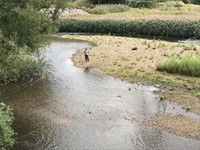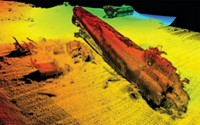Advertisement
Grab your lab coat. Let's get started
Welcome!
Welcome!
Create an account below to get 6 C&EN articles per month, receive newsletters and more - all free.
It seems this is your first time logging in online. Please enter the following information to continue.
As an ACS member you automatically get access to this site. All we need is few more details to create your reading experience.
Not you? Sign in with a different account.
Not you? Sign in with a different account.
ERROR 1
ERROR 1
ERROR 2
ERROR 2
ERROR 2
ERROR 2
ERROR 2
Password and Confirm password must match.
If you have an ACS member number, please enter it here so we can link this account to your membership. (optional)
ERROR 2
ACS values your privacy. By submitting your information, you are gaining access to C&EN and subscribing to our weekly newsletter. We use the information you provide to make your reading experience better, and we will never sell your data to third party members.
Environment
Lead Leaches From Plastics On The Beach
Pollution: Plastic bits that wash ashore carry with them metals that could contaminate beaches, researchers find
by Naomi Lubick
September 7, 2012

Below the cliffs of Ookushi Beach, on the Goto Islands of southwestern Japan, chunks of plastic wash ashore and form huge heaps. Buoys, floats, and other plastic items pile up on the isolated beach. The plastic litter leaches metals, particularly lead, into the environment, according to new research that cautions that the lead could harm beach ecosystems (Environ. Sci. Technol., DOI: 10.1021/es301362g).
The growing mass of plastic waste floating in the world’s oceans has already led researchers to examine what pollutants the bits of plastic flotsam might carry. To date, researchers have mainly examined how tiny plastic bits absorb persistent organic compounds and then release them into ocean water or the marine animals that swallow the plastic. Other researchers have detected metals that either glom onto plastic pellets at sea or are leftover from plastic manufacturing. But no one had looked at whether metals leach from plastic waste in the marine environment.
To find out if they do, Etsuko Nakashima of Japan’s Ehime University and her colleagues estimated the total amount of plastic debris on Ookushi Beach. They employed an aerial surveying method they had previously developed, using digital images taken by balloon (Mar. Pollut. Bull., DOI: 10.1016/j.marpolbul.2011.01.006). They collected over 26 kg of plastic litter from the beach and, in the lab, identified the plastic as polyethylene, polyvinyl chloride (PVC), polystyrene, and other polymers. They then estimated the mass of each plastic type on the beach.
To search for metals in each plastic type, the researchers used inductively coupled plasma mass spectrometry (ICP-MS) and X-ray fluorescence. They did not detect chromium, cadmium, or antimony, three particularly toxic metals, but did detect traces of tin. The highest metal concentrations were of lead, which they estimated made up more than 300 g of the 500 kg of plastic trash on Ookushi Beach. Most of the lead came from PVC; manufacturers often use the metal to stabilize PVC.
Because fishing weights were a major source of PVC litter on the beach, the team tested how much lead leached from them while sitting in purified water, to mimic rainwater. They calculated that about 0.45 mg of lead trickles out per hour from the total mass of PVC on the beach. That amount, they say, could increase the soil lead levels by 0.1 to 1 ppm every year. Nakashima says the team is currently trying to measure soil lead levels at Ookushi Beach, but she suspects they are well below 400 ppm, the level set by the U.S. Environmental Protection Agency to trigger soil remediation to protect human health.
But animals that live at the beach, such as crabs and bloodworms, may be more sensitive to lead, comments Chelsea Rochman of the University of California, Davis. The leaching experiments in the lab show that desorption is significant, she says, and adds that the leaching metals “might accumulate over time.”
Because of its isolation from cleanup teams, Ookushi Beach may have a worse pileup of plastic than most beaches, Rochman says. But she adds that similarly protected beaches appear in Hawaii and other mid-ocean islands.





Join the conversation
Contact the reporter
Submit a Letter to the Editor for publication
Engage with us on Twitter